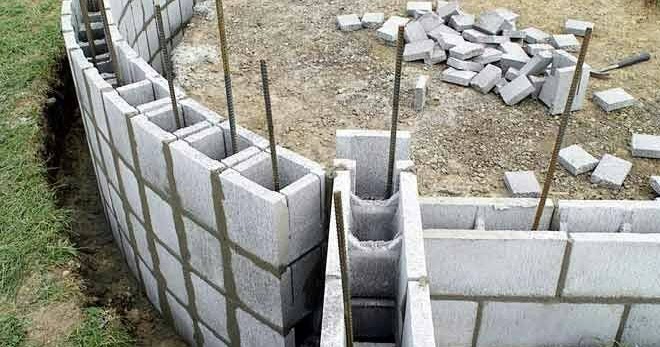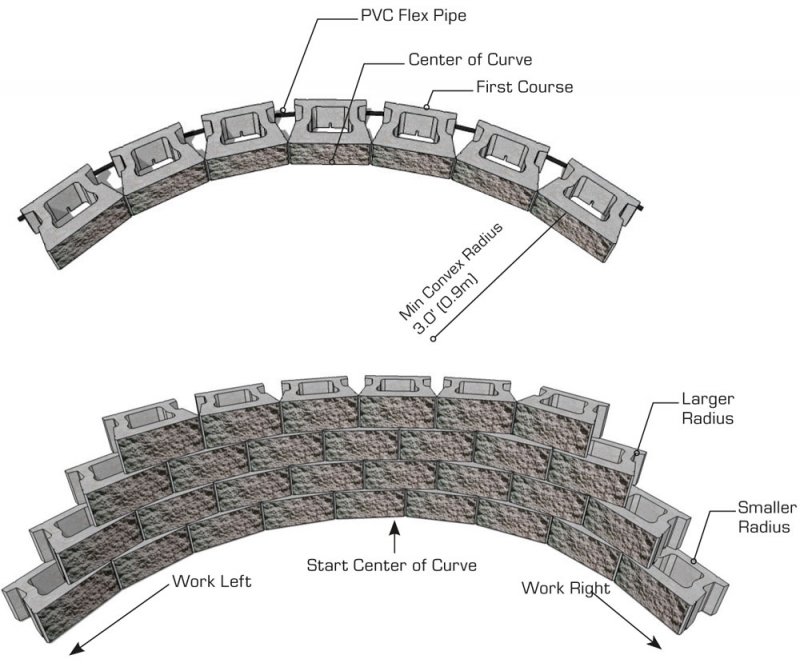

When you’re ready to build the base of your wall, lay out the first layer of blocks end to end, and put 3/8-inch (0.95 cm) wooden spacers between each block. Let the concrete harden overnight before moving on to the next step. Next, pour a layer of wet concrete into the trench and smooth it out with a concrete float. Once you start laying the cinderblocks, you’ll also need to put a vertical piece of rebar inside every other hollow space in the blocks and reinforce the bars with coarse core-fill grout. Reinforce each corner of the trench with a piece of steel rebar, each bent at a 90° angle and about half the width of the trench. So, if your blocks are 7 inches (18 cm) long, make the trench 10 inches (25 cm) deep.

#CURVED CINDER BLOCKS PLUS#
The trench should be about as deep as the cinder blocks are long, plus an additional 3 inches (7.6 cm).

Use a shovel to dig a trench inside the area you’ve marked off. Then, run a length of string between each of the stakes to mark off the perimeters of the footing. Once you’ve done this, drive 4 wooden stakes into the ground at each of the corners of the footing area. You’ll also need to decide how long you want the wall to be. So, if your wall is 16 inches (40 cm) wide, the footing area would be at least 32 inches (81 cm) wide all the way around the base of the wall. Next, calculate the footing area around the wall, which should be at least 2 times as wide as the wall itself. This means that if your blocks are 8 inches (20 cm) wide, the wall will be 16 inches (40 cm) wide. For example, if the wall will be 2 blocks wide, measure the width of a single block and multiply it by 2. To build a cinderblock wall, start by determining how wide you want the wall to be.


 0 kommentar(er)
0 kommentar(er)
